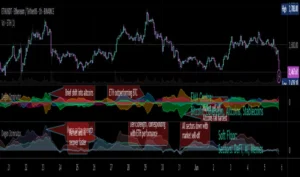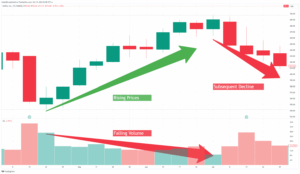Technology has always been a catalyst for change in business, but in today’s hyper-connected, digital-first world, it’s more than just a tool—it’s a growth engine. From artificial intelligence (AI) and automation to data analytics and cloud computing, technology has become inseparable from strategy. Companies that embrace innovation don’t just streamline operations—they unlock new markets, redefine customer experiences, and future-proof their growth.
So, what does the intersection of technology and business growth look like in practice? Let’s dive into the forces reshaping industries worldwide.
Technology as the New Competitive Advantage
In the past, businesses competed on price, scale, or efficiency. Now, technology is the differentiator. Whether it’s a retailer leveraging AI-driven recommendations or a manufacturer using robotics to speed up production, technology is creating advantages that competitors can’t easily replicate.
- Amazon’s personalization algorithms have set the gold standard for e-commerce.
- Tesla’s autonomous driving software continues to push automotive innovation.
- Netflix’s data-driven content creation has redefined the entertainment business.
In each case, technology isn’t just an enabler—it’s the foundation of growth.
Digital Transformation: More Than Just a Buzzword
Many businesses talk about “digital transformation,” but what does it really mean? At its core, it’s about integrating digital tools and mindsets into every aspect of the business.
- Cloud Computing allows businesses to scale quickly and collaborate globally.
- Big Data Analytics empowers leaders to make smarter, faster decisions.
- AI and Machine Learning enhance customer experiences and optimize operations.
- Automation frees employees from repetitive tasks, boosting productivity.
Companies that treat digital transformation as a strategy—not just an IT project—often see accelerated growth, improved efficiency, and stronger customer loyalty.
The Customer-Centric Revolution
At the intersection of technology and growth lies the customer. Businesses today aren’t just selling products or services—they’re delivering personalized experiences.
- AI-driven chatbots provide instant support 24/7.
- Mobile apps create seamless customer journeys.
- Predictive analytics help businesses anticipate needs before customers even voice them.
This focus on customer-centric technology not only drives satisfaction but also increases retention and lifetime value—both critical engines of growth.
Technology Unlocking New Business Models
Technology doesn’t just improve old models—it creates entirely new ones.
- The Sharing Economy – Platforms like Uber and Airbnb leverage mobile tech and data to connect supply with demand.
- Subscription Models – SaaS (Software-as-a-Service) companies like Salesforce turned software from a one-time purchase into a recurring revenue stream.
- Fintech Disruption – Payment platforms, peer-to-peer lending, and blockchain are rewriting the rules of finance.
These models would have been impossible without advancements in mobile technology, cloud systems, and secure digital payments.
Challenges at the Intersection
While technology fuels growth, it also brings challenges businesses must navigate.
- Cybersecurity Risks – More tech means more data exposure and potential vulnerabilities.
- High Costs of Implementation – Cutting-edge tools require significant investment.
- Workforce Upskilling – Employees need continuous training to adapt to new systems.
- Digital Divide – Smaller businesses without resources risk being left behind.
Those that succeed are the ones that balance innovation with risk management.
The Role of Data: Growth Through Insight
Data has become the new oil, and businesses that harness it effectively are pulling ahead. By analyzing consumer behavior, market trends, and operational efficiency, companies gain a competitive edge.
For example:
- Retailers use predictive analytics to optimize supply chains.
- Healthcare companies use AI to improve diagnostics and treatment outcomes.
- Financial institutions detect fraud in real-time through machine learning models.
The takeaway is clear: growth today is driven by insight, not instinct.
Case Studies: Growth Powered by Technology
Shopify
By creating an easy-to-use e-commerce platform, Shopify empowered small businesses to compete globally, turning itself into a multibillion-dollar company.
Zoom
The pandemic accelerated Zoom’s growth as remote work became essential. Its cloud-based video technology made it a household name.
SpaceX
Through innovation in rocket technology, SpaceX not only disrupted aerospace but also opened doors to commercial space travel—a market previously unimaginable.
The Future: Where Tech and Growth Converge
Looking forward, the intersection of technology and business growth will only deepen. Trends to watch include:
- AI Everywhere – From decision-making to creativity, AI will be embedded across industries.
- Sustainability Tech – Green technologies will align profit with environmental responsibility.
- Web3 and Decentralization – Blockchain may transform ownership, identity, and business operations.
- Metaverse Opportunities – Virtual worlds could create new channels for commerce and engagement.
Businesses that embrace these trends early won’t just grow—they’ll redefine their industries.
Final Thoughts
The intersection of technology and business growth isn’t a temporary crossroad—it’s the new normal. Companies that adapt quickly, invest wisely, and prioritize innovation will thrive, while those clinging to old models risk being left behind.
Ultimately, growth is no longer just about scaling—it’s about scaling smarter with technology. In this digital era, the businesses that succeed will be the ones that understand this simple truth: technology isn’t just part of the strategy—it is the strategy.









